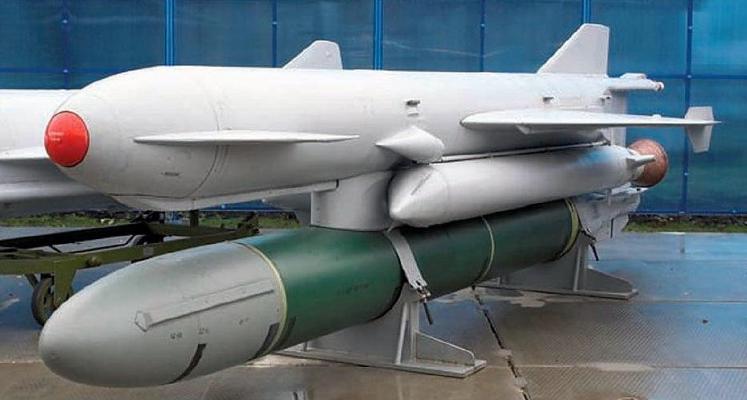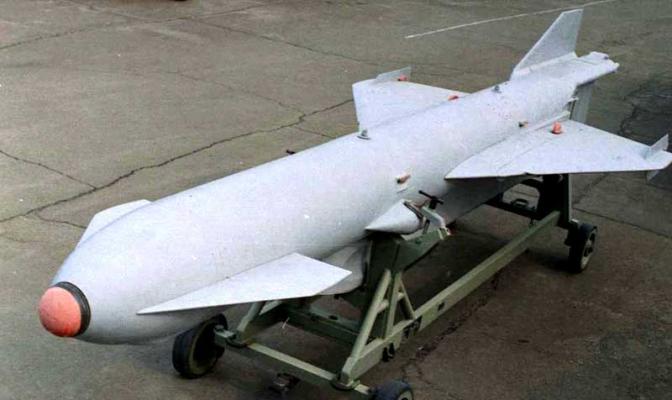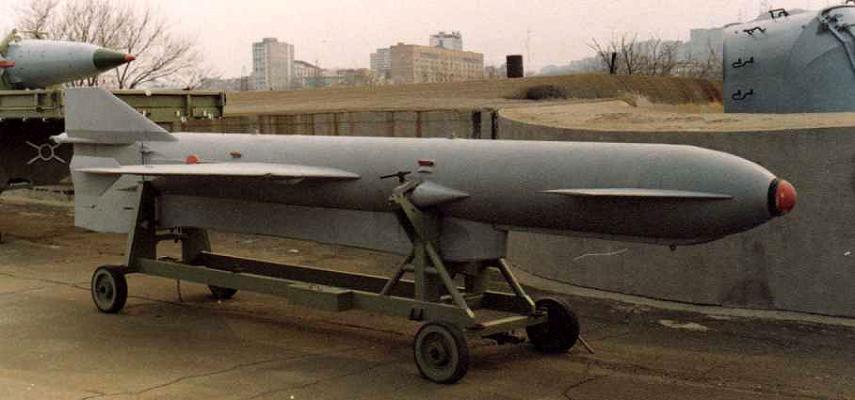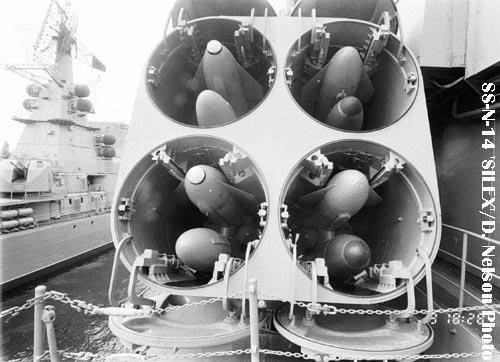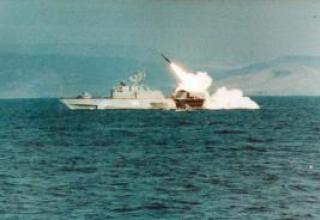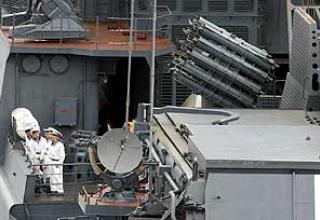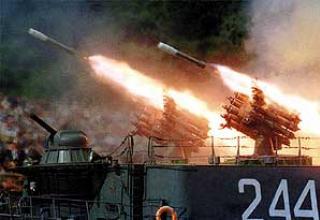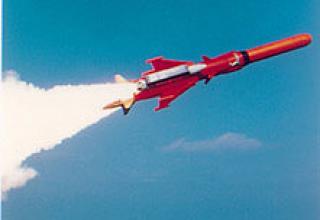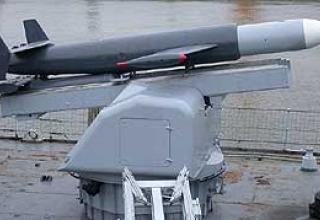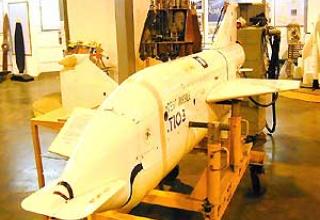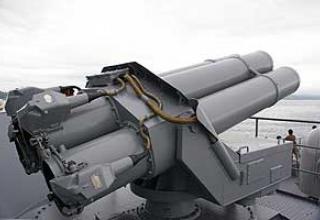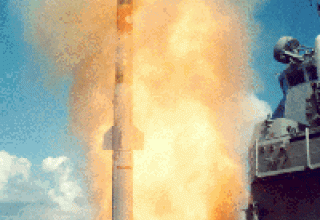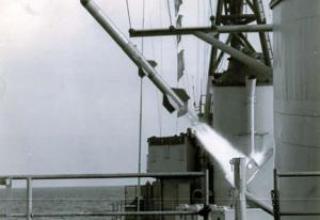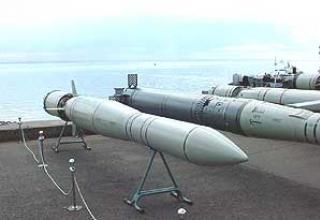In order to accelerate the development of submarine weapons, on May 04, 1976, the CM Resolution No. 302-116 on the development of submarine weapons was issued, providing for the development of a number of fundamentally new complexes of anti-submarine weapons and expanding the research front.
In 1984, the URS-5 "Rastrub-B" universal missile system with the 85RU rocket launcher was adopted for service with anti-submarine surface ships, which is the result of modernization of the URPK-3 and URPK-4 "Metel" systems. The difference of the new complex from the prototypes is its universality in terms of targets - it can be used to destroy both submarines and surface ships.
The URC-5 complex was developed by the Dubna Rainbow ICB "Rainbow" MAP and All-Russian Research Institute "Altair".
The "Rastrub-B" complex was equipped with patrol ships of projects 1155, 1134A, 1134B, 1135, 1135m and 11352.
In the west the complex was designated SS-N-14 Silex .
Composition:
The URC-5 complex is a part of the complex:
- 85RU cruise missiles with UMGT-1 anti-submarine guided torpedoes as combat units;
- launchers;
- ship's automatic launcher equipment;
- ground handling equipment.
Cruise missile 85RU (see layout chart) complex URC-5 carries on the pylon combat unit - small (caliber 400mm) anti-submarine guided torpedo UMGT-1. The use of a guided cruise missile in an anti-submarine missile system provides a significant increase in the efficiency of the complex compared to the use of a ballistic missile of the same purpose. To engage surface ships missile 85RU has a thermal homing head and an additional explosive charge (weight 185kg), located in the missile gondola.
The rocket's starting engine is solid propellant 85RMD, while its marching engine is also solid propellant 85RMD. The marching flight to the target area was carried out at a constant altitude, provided by the autopilot on signals from the altitude corrector. Control system - radio command.
Glider - all-metal, freely carrying monoplane with a medium wing. Cylindrical part of the fuselage smoothly passes into a specially shaped tail part ending with the steering wheel. In order to reduce the length of the missile, the combat unit - torpedo - is placed under the missile body, and the minimum transverse dimension is achieved by folding the wing and keel consoles (see rear view). The main materials used: AL-19, AMG-6, AL-19T, steel 30ХГСА.
The KT-106 launchers have four containers and are guided in a horizontal plane, which allows for an attack without additional maneuvering. Shooting is carried out by two missile volleys or single rocket launchers according to their own GAS and external target designation sources - ships, helicopters or hydroacoustic buoys at ranges from 6 to 55 km. The URC-5 firing control system is similar to the Monsoon system of the URPK-4 firing system, but an additional control mode has been introduced for firing at surface targets - in this case the missile flies at an altitude of 15m instead of 400, as it happens when shooting at underwater targets. The control system makes it possible to correct the missile's trajectory depending on changes in the current acoustic bearing on the target. The maximum range of fire can be fully realized only if there is an external target designation.
At the command of the ship's control system, the torpedo in the design point of location of the PL is separated from the missile and driven by parachute, then sunk, conducts a circulation search by the homing system and hits the target. The torpedo speed of the UMGT-1 torpedo (developed by Research Institute "Gidropribor") - 41 knots, range of 8 km, depth of 500 m, the response radius of the homing system is 1.5 km. UMGT-1 is separated from the missile at the design point of the trajectory, driven by parachute, performs a circular search of the target, aiming at the target and hitting it.
Characteristics:
| Maximum firing range, km | 55 |
| Depth of target, m | 500 |
| Flight Speed, M | 0.95 |
| Flight height, m | 15 - 400 |
| Start weight, kg | around 4000 |
| The length of the rocket, m | 7.2 |
| Rocket body diameter, mm | 574 |
| Overall diameter, m | 1.35 |
Testing:
As part of the UK's 12th Air Defence Regiment, Rapier SAMs participated in combat operations during the Falkland conflict in 1982. 12 launchers have been deployed since the first day of the English landing on the Falkland Islands. Sources from the English government (White Paper: The Falkland Campaign. Lessons) claim that 14 Argentine planes were destroyed by Rapier complexes. However, according to other information, the "Rapier" complex shot down only one AI Dogger A and participated in the destruction of the A-4C Skyhawk. The Blindfire radar did not participate in these hostilities.
The Rapier complex participated on the Iranian side in the war between Iran and Iraq in the 1970s, and is believed to have destroyed an Iraqi Tu-22 type bomber.
The "Rapier" SAM system was also deployed for the English multinational air defense contingent during Operation Desert Storm in 1991.
Sources:
- А.Б.Широкорад "Оружие отечественного флота", Минск, Харвест, 2001г.
- УРК-5 "Раструб-Б" /Черноморский флот/.
- Основные образцы и модификации самолетов, ракет и товаров народного потребления, освоенные производством ДМЗ с 1951 г. по 1996 г. (http://www.dubna.ru)
- П-35, П-500 и другие изделия /Airbase Forums/.
